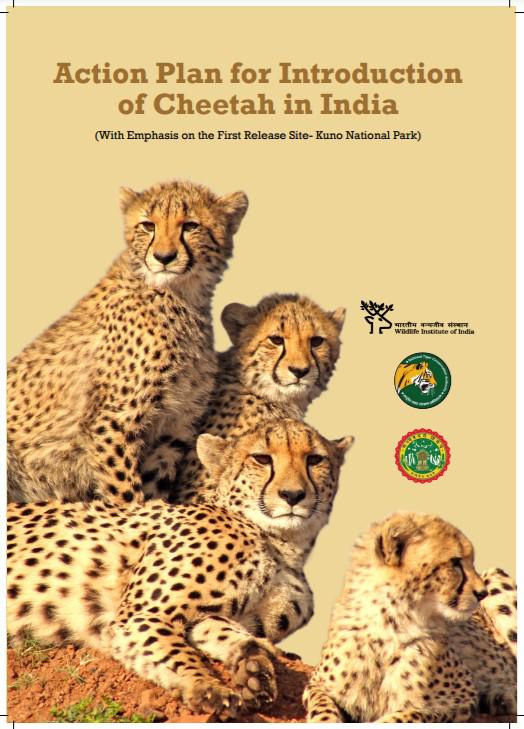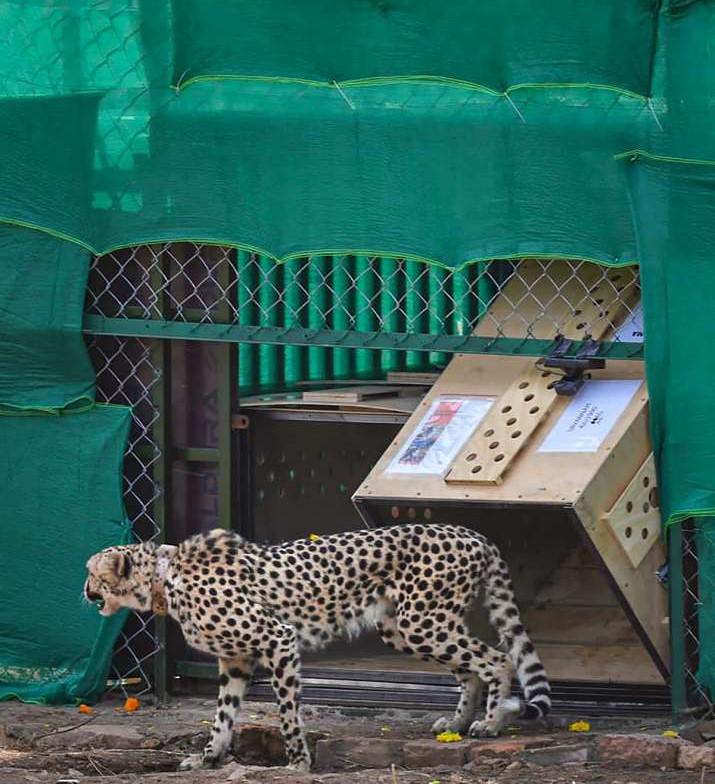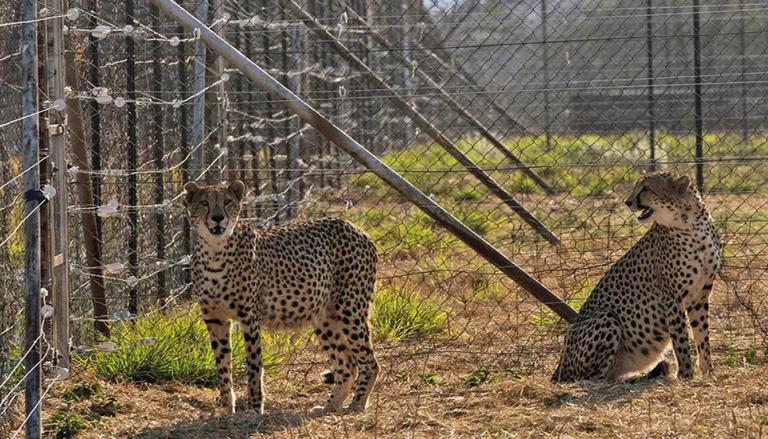Return of Cheetah!
The Cheetahs are the world's fastest land animals but today, Cheetahs are only found in southern and eastern Africa, especially in Namibia, Botswana, Kenya, and Tanzania, according to the World Wildlife Fund.

However, the endangered cats used to have a much larger range and cheetahs roamed throughout the Middle East and central India as well as most of sub-Saharan Africa. Habitat loss, poaching, and conflict with humans have greatly reduced their populations. The last cheetah in India died in 1947 in the Korea district in present-day Chhattisgarh, which was earlier part of Madhya Pradesh, and the species was declared extinct from India in 1952.
There are now less than 7,000 cheetahs left in the wild, says the WWF.
Policies do not succeed or fail on their own merits; rather their progress is dependent upon the process of implementation.
The Union environment ministry’s Rs 90 crore African Cheetah introduction programme was flagged off by Prime Minister Narendra Modi on his birthday. This is the first time a large carnivorous species has been moved across continents for establishing a new population. The five females and three males, aged between two and five-and-a-half, will each be fitted with a satellite collar.
Cheetah reintroduction in India involves the attempt to introduce and sustain a small population of Southeast African cheetah (Acinonyx jubatus jubatus) which is different from the Asiatic cheetah (Acinonyx jubatus).

The eight cheetahs were flown from Namibia and were accompanied by the consultant on the project Dr. Laurie Marker and her team of Cheetah Conservation Fund (CCF).
While there has been a lot of hype and excitement, some eminent biologists from Bengaluru, including Ulhas Karanth (centre for wildlife study)have pointed out it is imperative to distinguish free-ranging from fenced-in cheetahs. They have cautioned against the initial euphoria.
In southern Africa certain small, fenced reserves harbour cheetahs at densities that are over 15 times higher than their natural, free-ranging counterparts.
These ‘surplus’ cheetahs are often translocated, usually between fenced reserves.
Kuno National Park, which is only 748 sq km in area, unfenced, harbouring about 500 feral cattle and surrounded by a forested landscape with 169 human settlements nor the other landscapes considered are of the size and quality to permit self-sustaining and genetically viable cheetah populations,” the scientists have said. “Adopting such a speculative and unscientific approach will lead to human–cheetah conflicts, death of the introduced cheetahs or both, and will undermine other science-based species recovery efforts, both globally and within India.”
The eminent biologists have teamed up with colleagues from Europe, Australia and South Africa to share their concerns and sharing their views in a correspondence published in Nature Ecology and Evolution, the scientists said India’s plan was based on three unsubstantiated claims:
(1) that cheetahs have run out of space in Africa.
(2) that India currently has sufficient and suitable space for them.
(3) that conservation translocations have been successful in wild cheetah range restoration efforts.
The action plan also speculated that such a translocation would trigger the conservation of grassland and open forest ecosystems in India.
"Although there have been reported reintroduction successes of such fenced-in cheetahs into other fenced areas or reinforcement successes into known populations, we know of no reintroduction success into an unfenced area yet, even within Africa," they wrote in the journal.

Cheetah researchers also say that free-ranging cheetahs, even those that reside in prey-rich areas, require a lot of space. Kuno does not provide this space and therefore there is a high chance that the introduced cheetahs will move beyond the park boundaries and encounter people, livestock and domestic dogs leading to conflict between humans and the Cheetahs. To establish and flourish, Cheetahs require extensive patches of grassland around 10,000 to 20,000 sq. km of good quality habitat in chunks of 2,000 to 3,000 sq. km, which are connected. Without suitable high-quality habitats, it is extremely difficult to succeed.
Meanwhile, two cheetahs from Africa made history by making their first kill during the intervening night of November 6-7/2022. This is a significant development in the process of the introduction of cheetahs at Kuno because it indicates that the wild cats are willing to adapt to their new home.
The enclosure where the cheetahs have been released has cheetah, blue bull, four-horned antelope, wild boar and Indian gazelle as prey base.
The process to bring cheetahs into India spans several decades including an ingenious proposal in 2005 by the CSIR — Centre for Cellular and Molecular Biology, Hyderabad, to clone an Asiatic cheetah. But Iran, where the species was extant but dwindling, refused to share an animal.

The presence of 70 to 80 leopards and hyena packs has been noticed in KNP's core and buffer area spread over 1,200 sq km which is worrisome as Hyenas and Leopards attack and kill Cheetahs. The ground realities of India and its human overpopulation along with packs of feral dogs could all cause potentially high mortalities.
Faiyaz Khudsar, a conservation biologist, told CNN’s Zoe Sottile and Tara Subramaniam "If, naturally, you build up the population of the prey base and then you bring in a predator its chances are brighter “But if you bring in a prey base from somewhere else... I don't know which direction it will go after six months or a year.”
The question is whether the long-extinct species can thrive beyond captivity.
The success of this batch of animals to adapt and acclimatise to their new home is significant and will pave the way for India’s initiative to be home to four wildcats — the tiger, lion, leopard and cheetah. The quandary is real and only time will tell which way the wind is blowing.
Comments (9)








